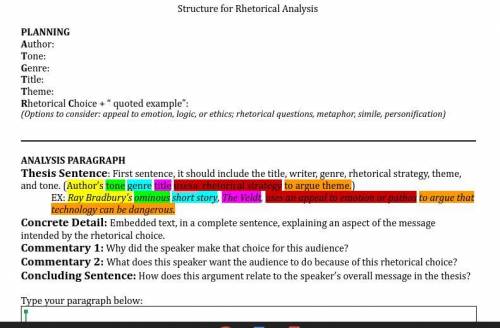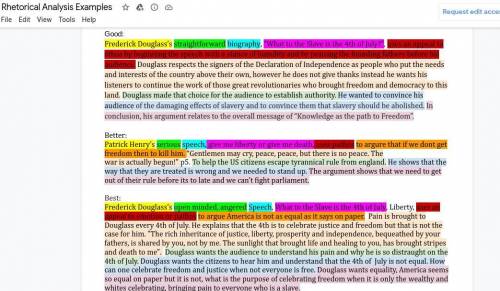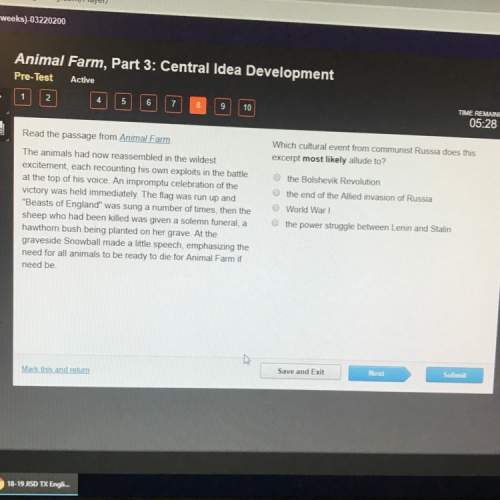
English, 06.11.2020 06:10 madelynlittle5399
Structure for Rhetorical Analysis
The first slide is what it needs to be.
The second Slide is the Story for the Rhetorical Analysis.
The third slide is examples of what the Rhetorical Analysis is supposed to look like.
Can this be finished in 2 hours or less if (possible)
THANKS



Answers: 2


Another question on English

English, 21.06.2019 18:30
What is one way that the author makes a distinction between the first transcontinental railroad and the first transcontinental passenger flights in 1936
Answers: 1

English, 21.06.2019 21:10
Read this excerpt of "from blossoms": from laden boughs, from hands,from sweet fellowship in the bins,comes nectar at the roadside, succulentpeaches we devour, dusty skin and all,comes the familiar dust of summer, dust we eat.which word create a positive mood?
Answers: 1

English, 22.06.2019 04:50
Read the passage, then answer the question that follows. no one could have seen it at the time, but the invention of beet sugar was not just a challenge to cane. it was a hint—just a glimpse, like a twist that comes about two thirds of the way through a movie—that the end of the age of sugar was in sight. for beet sugar showed that in order to create that perfect sweetness you did not need slaves, you did not need plantations, in fact you did not even need cane. beet sugar was a foreshadowing of what we have today: the age of science, in which sweetness is a product of chemistry, not whips. in 1854 only 11 percent of world sugar production came from beets. by 1899 the percentage had risen to about 65 percent. and beet sugar was just the first challenge to cane. by 1879 chemists discovered saccharine—a laboratory-created substance that is several hundred times sweeter than natural sugar. today the sweeteners used in the foods you eat may come from corn (high-fructose corn syrup), from fruit (fructose), or directly from the lab (for example, aspartame, invented in 1965, or sucralose—splenda—created in 1976). brazil is the land that imported more africans than any other to work on sugar plantations, and in brazil the soil is still perfect for sugar. cane grows in brazil today, but not always for sugar. instead, cane is often used to create ethanol, much as corn farmers in america now convert their harvest into fuel. –sugar changed the world, marc aronson and marina budhos how does this passage support the claim that sugar was tied to the struggle for freedom? it shows that the invention of beet sugar created competition for cane sugar. it shows that technology had a role in changing how we sweeten our foods. it shows that the beet sugar trade provided jobs for formerly enslaved workers. it shows that sweeteners did not need to be the product of sugar plantations and slavery.
Answers: 1

English, 22.06.2019 08:20
In your own words, explain the purpose and impact an adjective clause has on a reader
Answers: 3
You know the right answer?
Structure for Rhetorical Analysis
The first slide is what it needs to be.
The second Sli...
The second Sli...
Questions


Biology, 18.08.2019 19:50


Biology, 18.08.2019 19:50


Mathematics, 18.08.2019 19:50

Social Studies, 18.08.2019 19:50

Mathematics, 18.08.2019 19:50

Mathematics, 18.08.2019 19:50

Mathematics, 18.08.2019 19:50






Physics, 18.08.2019 19:50


Health, 18.08.2019 19:50

Mathematics, 18.08.2019 19:50




